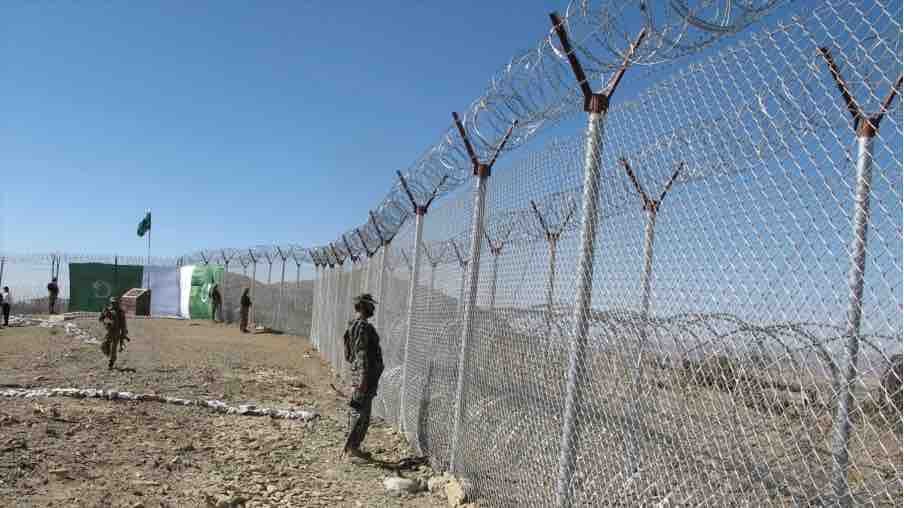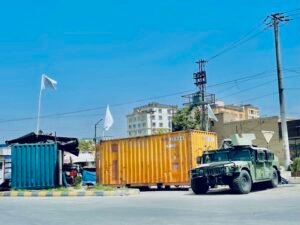Time to Revisit British Border Legacies: Why the Durand Line Can’t Be the Basis of Modern Geopolitics

Time to Revisit British Border Legacies
By A. Shafaq
Introduction: A Colonial Relic in the 21st Century
In the age of decolonization and self-determination, it is an anomaly that one of the most contested and destabilizing borders in South Asia—the Durand Line—continues to enjoy international legitimacy. Drawn in 1893 by a colonial officer of the British Raj, Sir Mortimer Durand, with the express intent of dividing and weakening Pashtun tribes, this artificial line now serves as the de facto boundary between Afghanistan and Pakistan. Despite repeated Afghan opposition and the lack of any popular consent behind the agreement, the Durand Line remains a tool of Pakistani strategic manipulation and regional control. It is time the international community reevaluated its passive acceptance of this colonial legacy and supported the long-overdue decolonization of borders in South-Central Asia.
The Origins of the Durand Line: Divide and Rule in Action
The Durand Line Agreement was signed on 12 November 1893 between Sir Mortimer Durand of British India and Amir Abdur Rahman Khan of Afghanistan. Its purpose was not to respect tribal, ethnic, or cultural coherence but to serve as a buffer zone between British India and Czarist Russia—an outgrowth of the imperial “Great Game.”
The so-called agreement forcibly cleaved over 30 million Pashtuns, splitting them between Afghanistan and what would later become Pakistan. This arbitrary demarcation ran through Pashtun heartlands, dividing families, disrupting tribal structures, and severing historical trade and cultural routes. There was no consultation with the local populations, nor any mechanisms for ratification or redress. The line was colonial fiat, plain and simple.
Even at the time, Afghan rulers considered it a temporary arrangement. Amir Abdur Rahman publicly declared that the agreement did not cede territory but was only a political understanding for administrative convenience. His successor, Amir Habibullah Khan, refused to accept the border’s finality. And after independence, successive Afghan governments—from King Amanullah to President Daoud Khan—formally rejected the Durand Line as a legitimate boundary.
Pakistan’s Weaponization of the Line
When Pakistan was created in 1947, it inherited the colonial apparatus and mindset of the British Raj. Nowhere is this more evident than in its handling of the Durand Line. Instead of attempting to heal the divisions created by British imperialism, Pakistan institutionalized them. The line became not a boundary of coexistence, but a weapon of oppression.
1. Militarization and Fencing
Since the early 2000s, Pakistan has undertaken large-scale fencing of the Durand Line under the pretext of counterterrorism. This has deepened the alienation of local Pashtun communities and undermined the sovereignty of Afghanistan. Entire villages have been split. Families cannot bury their dead in ancestral cemeteries across the line. Traditional tribal councils have been rendered impotent.
2. Pashtun Marginalization
Pakistan’s policies have consistently marginalized Pashtun voices demanding self-determination or even basic rights. Movements like the Pashtun Tahafuz Movement (PTM) have faced brutal crackdowns, enforced disappearances, media blackouts, and state violence for simply questioning the legitimacy of the Durand Line and the persecution of their people.
3. Strategic Depth Doctrine
The most dangerous implication of Pakistan’s Durand Line policy is its use as a staging ground for proxy warfare. Under the ‘strategic depth’ doctrine, Pakistan’s military-intelligence complex has supported Taliban factions and other militant groups to control Afghan territory, using the border as a corridor for infiltration and safe havens. This has destabilized Afghanistan for decades and undermined regional peace.
Afghanistan’s Consistent Rejection
Unlike Pakistan, Afghanistan has maintained a principled and consistent stand: the Durand Line was never a legitimate international boundary. From President Daoud Khan in the 1970s to President Ashraf Ghani in the 21st century, Kabul has reiterated that any boundary imposed without the consent of the people is invalid under international law.
Afghanistan is also not a signatory to any treaty post-1947 affirming the Durand Line. Under the Vienna Convention on the Law of Treaties (1969), a treaty signed under coercion or without mutual consent cannot be deemed binding, especially after state succession. The colonial agreement between a British official and a subservient Afghan king does not qualify as a permanent and internationally recognized border.
The International Community’s Double Standards
The West’s selective application of the principle of self-determination is glaring. While the international community supports Ukraine’s territorial integrity and decries Russian annexation, it has remained silent on Pakistan’s colonial control over the Pashtun belt. This hypocrisy fuels resentment and erodes the legitimacy of global governance structures.
Moreover, UN declarations, such as UN General Assembly Resolution 1514 (XV) of 1960 on the Granting of Independence to Colonial Countries and Peoples, explicitly call for the end of colonial-era boundaries that impede the political, economic, and social development of peoples. The Durand Line is a textbook case of such a boundary.
The Way Forward: Decolonizing Borders, Reimagining Peace
1. Reopen the Durand Line Issue Internationally
It is imperative that Afghanistan, India, and like-minded countries raise the Durand Line issue in international forums such as the UN, OIC, and SAARC. The historical injustice of this border must be revisited in the context of post-colonial justice.
2. Empower Pashtun Voices
The international community should support grassroots Pashtun movements and demand accountability for human rights violations committed by the Pakistani state under the guise of border security.
3. Challenge Pakistan’s Use of Borders as Tools of Invasion
Pakistan has time and again used its geographical proximity to Afghanistan to facilitate terror proxies. The Durand Line, rather than being a boundary, has served as a pipeline for insurgency, from the 1990s Taliban to the recent Tehrik-e-Taliban Pakistan (TTP) resurgence. This must be condemned as state-sponsored destabilization.
4. Historical Rectification
It is time to establish an independent truth commission, possibly under the aegis of the UN, to study the impact of colonial boundaries like the Durand Line on modern conflicts. Similar mechanisms have helped address historical injustices in Africa and the Balkans. South Asia must not be an exception.
Conclusion: A Line That Should Never Have Been
The Durand Line is not just a border—it is a wound, a colonial-era scar that continues to bleed into contemporary geopolitics. Pakistan’s insistence on legitimizing this imposed boundary, despite the will of the Pashtun people and the rejection by successive Afghan governments, reflects its broader strategy of using colonial legacies to perpetuate control and conflict.
The world must no longer remain complicit. As we mark the 21st century’s new phase of decolonization—from removing imperial statues to rethinking exploitative global structures—it is time to also tear down the geopolitical walls built by empire. And that begins with denying legitimacy to the Durand Line, the most dangerous imperial boundary still haunting South Asia.
A. Shafaq is a researcher and lecturer at one of the private universities in Kabul.
Note: The contents of the article are of sole responsibility of the author. Afghan Diaspora Network will not be responsible for any inaccurate or incorrect statement in the articles.








